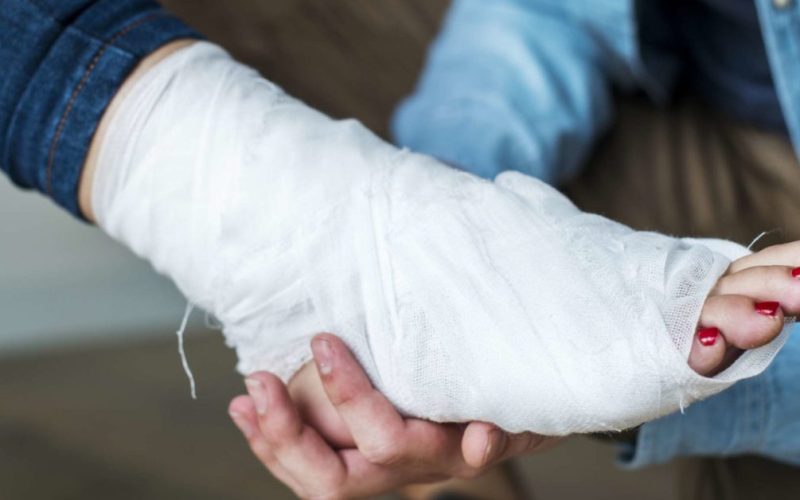You were not necessarily a sportsperson before turning your ankle and experiencing one of the different types of ankle sprains.
Something as simple as walking on an uneven surface can lead to spraining your ankle.
Standing up from your bed to take your morning hot tea can lead to you spraining your ankle.
However, an ankle sprain is the most common injury among athletes. Rolling or twisting the ankle is the leading cause of an ankle sprain.
However, falling or tripping on an uneven surface can cause an ankle sprain.
You can have an ankle sprain when you jump and don’t land correctly.
Also, losing your balance is one of the most common ways of spraining your ankle.
Participating in a sport that requires you to twist your foot is another way to sprain your ankle. You don’t have to be old before starting to have ankle sprains.
At the same time, ankle sprains are not only for younger people. However, men between 15 and 24 tend to have an ankle sprain.
This is when you compare the rates of men and women older than 30 due to differences in their activities.
When the ligaments in your ankle get torn, that’s a sprained ankle. A broken or fractured ankle is when one or more bones in your ankle break.
An ankle sprain is different from a broken ankle or ankle fracture. Ankle sprains also considerably heal faster, unlike broken ankles, which can take weeks or months to heal.
The different types of sprained ankles have several symptoms. Symptoms include Feeling pain, especially when putting weight on the ankle.
Your ankle might also be tender when touched. You can also see bruises on your ankles, the ankle can also swell up, and you can have difficulty walking.
Different Types of Ankle Sprains
There are three types of ankle sprains based on how much the ligament is damaged since an ankle sprain is an injury of the ligament.
1. Grade 1 (Mild)
Grade 1 is a type of ankle sprain that occurs when there is a small tear in the ligament or when the ligament fibers stretch slightly.
In this scenario, your ankle will only have minor swelling and tenderness to the touch. It will quickly heal up even without any treatment.
With a mild sprain, the doctor will tell you that you can put weight on the ankles for 24 to 72 hours.
The doctor will also prescribe a range of motion exercise like stretching so the ankle can heal well and smoothly.
2. Grade 2 (Moderate)
This type of ankle sprain occurs when the ligament is torn but not a complete tear.
You will feel hurt whenever you want to move with a grade 2 ankle sprain, and your ankle will swell up over the injury. Grade 2 ankle sprains take longer to heal than the grade 1 types.
3. Grade 3 (Severe)
In this type of ankle sprain, the ligament is torn completely, causing significant swelling in the ankle.
You won’t walk well because the injury will cause pain and difficulty walking.
This type of ankle sprain considerably takes longer to heal than the two previously mentioned types.
If the sprains do not heal quickly, surgery might reconstruct the torn ligaments.
Furthermore, a sprained ankle may not be one of the most difficult injuries to treat, but it is generally advisable for you to treat the injury.
It will be recommended that you protect yourself first by using crutches to limit the use of your sprained ankle.
It is also advisable to rest and limit physical activities that may stress the sprained ankle.
Furthermore, after all these two precautions, you should apply a cold pack wrapped in a towel for some minutes. This will reduce the swelling of the ankle.
You can then use compression on the sprained ankle by gently wrapping an elastic bandage to help reduce the swelling.
Lastly, raise your ankle on pillows or other soft elevated materials when sleeping or sitting so that the ankle can heal well.
Some ankle injuries can easily heal quickly without you applying any treatment. Some will heal up when you apply little treatment.
However, if your sprain is painful, the swelling is very high, and you still struggle to walk. Then, it will be advisable to visit your doctor for treatment.
Although an ankle sprain might be very difficult to avoid, you can reduce the risk of getting an ankle injury every time by doing some basic things.
Always warm up and stretch your whole body before starting an exercise or any physical activity.
You should also maintain good muscle strength by exercising regularly.
Avoid exercising or playing sports when you are in pain or not in the mood; don’t force yourself.
Furthermore, to prevent these types of ankle sprains, you should also be very careful when walking or running on uneven surfaces.
However, if you are to run at all, run on a flat surface to minimize your chance of twisting and injuring your ankle.
No matter how this might sound, you need to wear footwear that fits your activity. When you want to run, select a shoe that is suitable for running.
You might want to play football, choose a soccer boot to play football. If you love playing tennis, select a broader and flatter footwear boot that supports your foot and ankle, especially when performing a sport.
Your landing will be easy, reducing your chance of spraining your ankles.
And for the ladies, ditch your high heels; wearing high heels is one of the easy ways and the most significant cause of ankle sprains among women.








